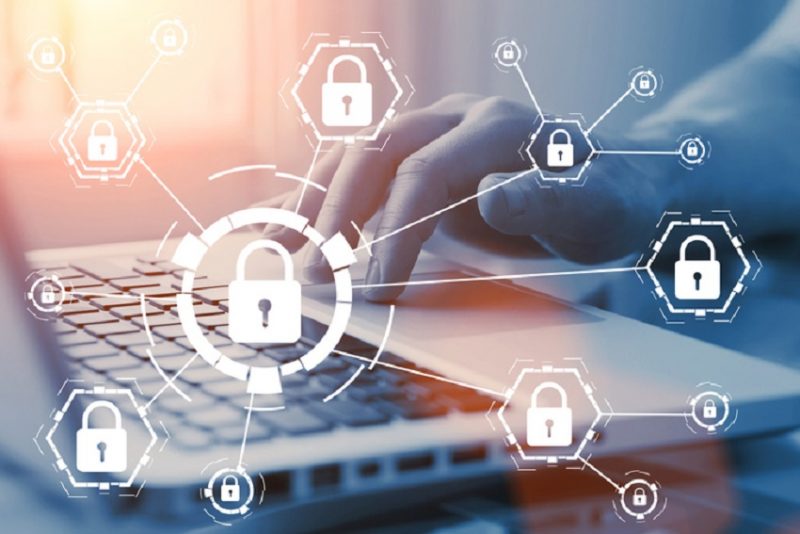The internet is a modern Silk Road facilitating global transactions. Unfortunately, just as merchants faced bandits, internet users now grapple with cyber attackers. Cyber threats are increasingly becoming a norm for businesses, both large and small. The need for cybersecurity has led to the creation of laws such as the Health Insurance Portability and Accountability Act (HIPAA) and the General Data Protection Regulation (GDPR). Large organizations, including governments, are taking measures to protect their businesses, and small organizations need to follow.
Why Do Cyber Attackers Aim For Small Businesses?
Crippling headlines of cyberattacks on large corporations often flood the media. Unfortunately, the reports leave out the majority of the attacks, especially on small businesses. According to Verizon, 43% of cyberattacks in 2019 targeted SMBs. Why? More often than not, entrepreneurs and small business owners dedicate few resources to cybersecurity. Hackers have an easier time accessing weak systems.
The situation only escalates from this point. SMB owners underestimate their vulnerability to cyber-attacks. Towergate found that despite 60% of small businesses being victims of a cyber-attack, 35% still consider cybersecurity as a low priority. 81% of the companies had no training on cybersecurity, and 68% of the businesses confessed that they had no formal policies to address cybersecurity.
Unfortunately, cyber-attacks are a costly venture for businesses. The U.S. National Cyber Security Alliance confirms that 60% of SMBs that are victims of cyber-attacks go out of business. SMBs store essential private information in their client details and financial details. Cybercriminals cash in through the sale of personal information, committing identity theft, asking for ransom, or withdrawing funds from bank accounts.
What Are Cybersecurity Threats?
A cybersecurity threat is an attack by and organization or individual that seeks to gain unauthorized entry into an individual’s or organization’s computer systems to corrupt or steal confidential data. No business is immune from cyber-attacks. Therefore, it pays to know the types of threats your small business faces.
- Trojan: In this attack, hackers send a malicious software disguised as a legitimate application. The Trojan tricks you into installing malware in your computer before either destroying or stealing data from the computer.
- Virus: A virus is a malicious software that aims to destroy a computer system and bring networks to a standstill. The virus can attach to documents or programs and lie dormant until a specific action launches it.
- Phishing Attacks: These are social engineering attacks that aim to access personal information such as bank account details, social security numbers, and credit card details. Usually, phishing scams send out fake emails that look like official emails to trick you into giving personal information.
- Distributed Denial of Service (DDoS): This attack slows down a company’s website by sending thousands of requests from different IP addresses. The business’s servers overload, causing the unreliability of services.
- Ransomware: This type of attack sends malware to your computer system to lock you out. Usually, the attackers may demand a ransom before removing the malware.
- Password Attacks: These attacks try to access connected accounts by accessing one password. For this reason, changing passwords frequently is essential.
How Can SMBs Improve Their Cybersecurity?
It is critical to ensure that your business has a fighting chance against malicious cyberattacks. Here are some of the steps you can implement to protect your small business.
- Antivirus Software: This is one of the most common ways to protect a network from malware. The program prevents, detects, and removes viruses from computers. For protection, ensure that the antivirus is always up to date.
- Firewall: A firewall is a security feature that monitors the traffic between networks. It can prevent entry to or from a private network, which reduces the number of people that have access to your computer or website.
- Backup: Have a reliable backup for all your data away from your computer. Nowadays, you can find reliable cloud storage solutions for your data to protect it from attacks and also have access if a hacker holds your data hostage.
- Encryption Software: Encryption software protects sensitive private data such as employee information, payment details, financial records, health information, and customer information. Only authorized personnel will have access to the data.
- Two-Step Authentication: Install a password program and use two-factor authentication to make it harder for hackers to crack passwords.
- Educate: Educate yourself and your employees on cybersecurity threats and the need for best practices. Encourage your workers to take personal initiatives to protect company information by using strong passwords and authorized devices to access company data.
- Create a Formal Cybersecurity Policy: Establish a formal cybersecurity policy that outlines best practices, protective measures, incidence response measures, and lists authorization procedures for certain data classes. Establishing an official plan also creates rules that employees are bound to follow.
Conclusion
Cyberattacks are a global threat to both large and small organizations. As an SMB owner, it is essential to be conscious attacks that your business faces. Hackers use phishing attacks, password cracking, Trojans, viruses, malware, and ransomware to attack small businesses. To enhance cybersecurity, take appropriate measures including creating policies, educating employees, and using software such as password managers, firewalls, antiviruses, and encryption software.
